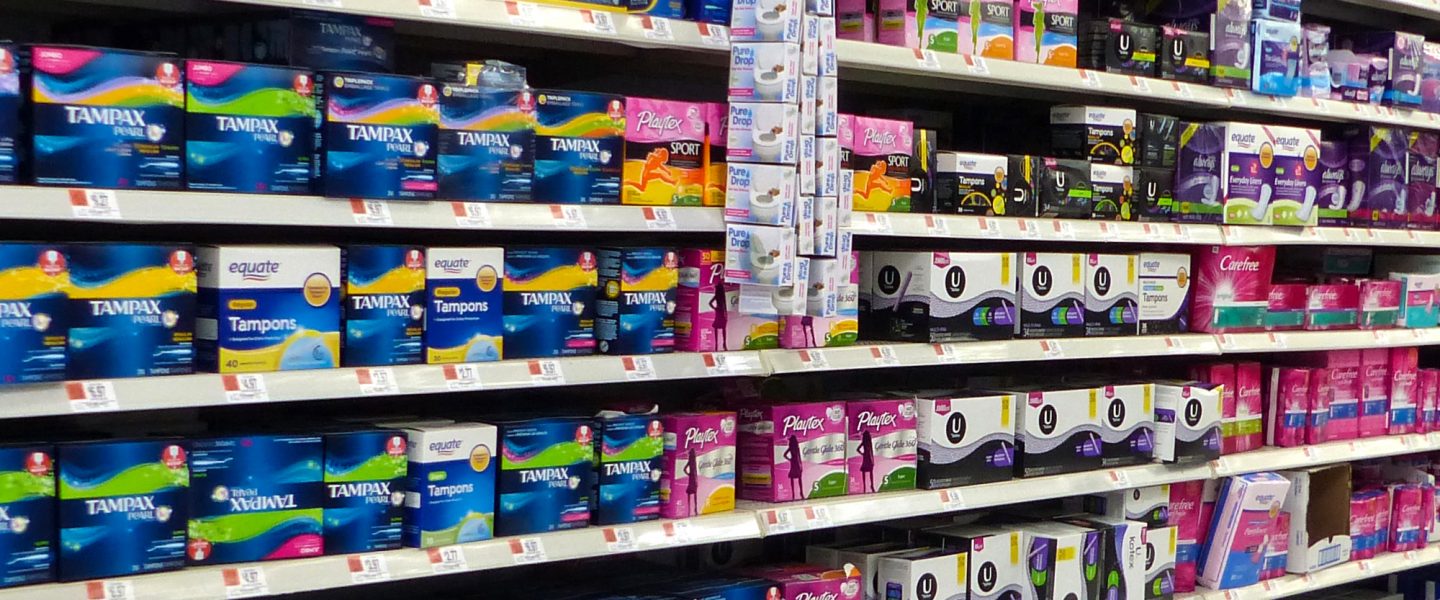The ongoing tampon shortage reveals toxic chemicals in the majority of menstrual products that harm women’s health and, possibly, their children.
|
Listen To This Story
|
During the national tampon shortage earlier this summer, people who menstruate worried about where to find period products. As tampons come back to shelves, that worry has subsided; but few consumers are worried about what is in these products. They should be.
People who menstruate bleed for approximately 1,800 days over the course of their lives. That means for the equivalent of five years, they are using chemically coated pads, tampons, and period underwear. And while the shortage has brought period products into the media, these toxins are still not being highlighted.
Tampons, pads, and period underwear contain dangerous materials ranging from pesticides to PFAS, a family of dangerous “forever chemicals” that lurk in the body for years.
The reason why it is so dangerous for pads and tampons to contain these chemicals is because they come into contact with the most sensitive and absorptive skin on the body. These toxic substances can then transfer directly into the bloodstream.
A user may not ever know that these products are dangerous. Pads and tampons are regulated as “medical devices,” meaning there is no government requirement to list ingredients. The only way to know that products are safe is to buy organic.
Non-organic tampons contain parabens, chemicals that disrupt the hormones in the body and harm fertility and reproductive organs. They can also contain pesticide residue, plastics, and other cancerous chemicals.
The same is true for non-organic pads. A 2019 study found that pads contain higher amounts of toxic chemicals than commercial plastic products, which means they can be detrimental to reproductive organs and affect birth outcomes.
https://twitter.com/JennieSTaer/status/1548752865379995649
Publications from The New York Times to Good Housekeeping suggest women switch to period underwear in response to the tampon shortage. These look just like regular underwear but contain an extra layer of material that absorbs fluid and prevents leakage. Many sustainability blogs are praising these products as an alternative to wasteful tampons, and many menstruators prefer reusable underwear because they don’t require constant changing like pads and tampons and come in multiple styles.
But popular period underwear brands such as Thinx and Knix Wear have been found to contain high levels of PFAS. This family of forever chemicals is linked with cancer and liver damage.
Jessian Choy, who ran an independent study for Sierra, the Sierra Club’s magazine, sent Thinx menstrual underwear to Graham Peaslee, a scientist at the University of Notre Dame who previously found PFAS in food chemical wrappers, to test for PFAS. Thinx briefs contained PFAS levels of 3,264 parts per million (ppm), which is high enough to suggest the chemicals were added intentionally.
Another independent study found similar results. Mamavation, a blog committed to finding toxins in common products, commissioned tests of period underwear at an independent laboratory looking for fluorine, the chemical that unites all PFAS chemicals. Out of the 14 pairs of period underwear brands tested, eight had detectable fluorine present while six were PFAS-free. Three of these brands contained levels high enough to suggest that PFAS were intentionally added.
When asked to comment, Knix Wear insisted that their products are safe, denying the accusations of PFAS contamination. The company began testing their products in February of 2020, posting all results on their website.
Thinx also denied the accusations, saying in a statement to WhoWhatWhy: “While we cannot comment on legal matters, at Thinx Inc., we take customer health and product safety very seriously. PFAS have never been part of our product design. In fact, we require all of our suppliers to guarantee that they do not use PFAS chemicals in our products.” Still, the company has not followed up with testing to prove their claim.
“These results add to the growing body of evidence reaffirming that we need to know more, not less, about the ingredients in period products,” said Alexandra Scranton, director of science and research at Women’s Voices for the Earth, in a statement to Mamavation. “Millions use menstrual products monthly. It is unacceptable that there are so many unknowns about the ingredients, safety, and health impacts of products that come into contact with one of the most sensitive and absorbent parts of the body.”

And little is being done to combat these unknowns. New York, in 2019, was the first state to pass legislation that requires lists of ingredients on menstrual product packages. California soon followed, passing a similar law that will take effect in 2023.
Two women are suing Knix Wear in California, claiming the brand’s marketing is misleading. Knix Wear states that their underwear is “PFAS free” and “designed to be both safe and effective.”
Because period product manufacturers are primarily focused on keeping up with demand, they spend little time finding solutions to the toxin problem.
Procter & Gamble, the makers of brands including Tampax and Always, stated to Bloomberg in June that the company was “working hard to ramp up production to meet the increased demand for our products,” but said nothing about changing the makeup of these products.
Edgewell, the company behind Playtex, promised the same, anticipating a return to normal in June or July. Again, there was no acknowledgement of the harmful materials coming into contact with menstruators.
Historically it has been up to the media to force any societal change. Without increased and open coverage of menstruation issues, adequate change will take longer.
“We have these societal stigmas into menstruation that stifle discussion and investigation,” said Chris Bobel, president of the Society for Menstrual Cycle Research, to Time. “There’s a ‘just shut up and clean it up’ approach.”
In fact, this is probably the first piece on the tampon shortage you’ve even read in a month.




